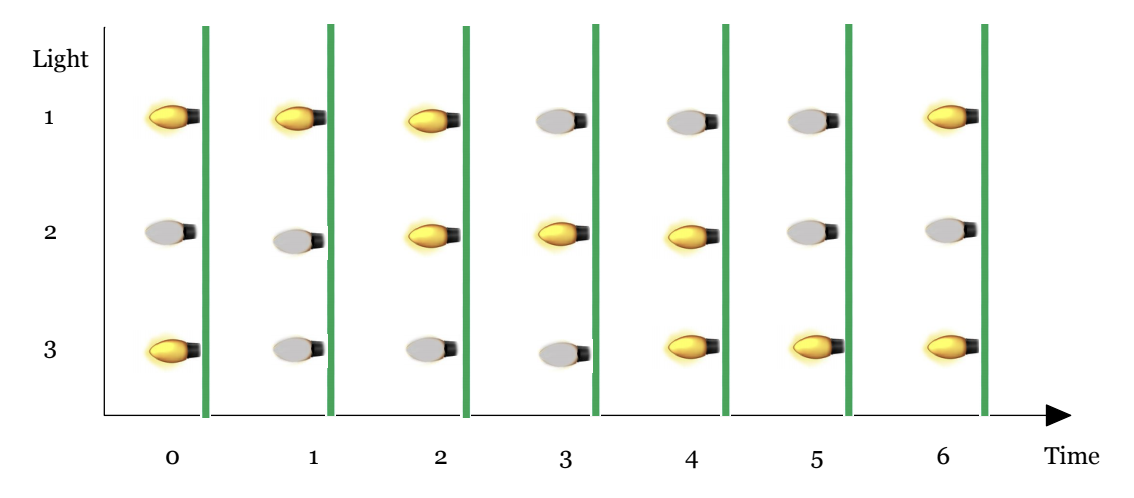Preparando MOJI
It is a holiday season, and Koala is decorating his house with cool lights! He owns $$$n$$$ lights, all of which flash periodically.
After taking a quick glance at them, Koala realizes that each of his lights can be described with two parameters $$$a_i$$$ and $$$b_i$$$. Light with parameters $$$a_i$$$ and $$$b_i$$$ will toggle (on to off, or off to on) every $$$a_i$$$ seconds starting from the $$$b_i$$$-th second. In other words, it will toggle at the moments $$$b_i$$$, $$$b_i + a_i$$$, $$$b_i + 2 \cdot a_i$$$ and so on.
You know for each light whether it's initially on or off and its corresponding parameters $$$a_i$$$ and $$$b_i$$$. Koala is wondering what is the maximum number of lights that will ever be on at the same time. So you need to find that out.
 Here is a graphic for the first example.
Here is a graphic for the first example. The first line contains a single integer $$$n$$$ ($$$1 \le n \le 100$$$), the number of lights.
The next line contains a string $$$s$$$ of $$$n$$$ characters. The $$$i$$$-th character is "1", if the $$$i$$$-th lamp is initially on. Otherwise, $$$i$$$-th character is "0".
The $$$i$$$-th of the following $$$n$$$ lines contains two integers $$$a_i$$$ and $$$b_i$$$ ($$$1 \le a_i, b_i \le 5$$$) — the parameters of the $$$i$$$-th light.
Print a single integer — the maximum number of lights that will ever be on at the same time.
3 101 3 3 3 2 3 1
2
4 1111 3 4 5 2 3 1 3 2
4
6 011100 5 3 5 5 2 4 3 5 4 2 1 5
6
For first example, the lamps' states are shown in the picture above. The largest number of simultaneously on lamps is $$$2$$$ (e.g. at the moment $$$2$$$).
In the second example, all lights are initially on. So the answer is $$$4$$$.